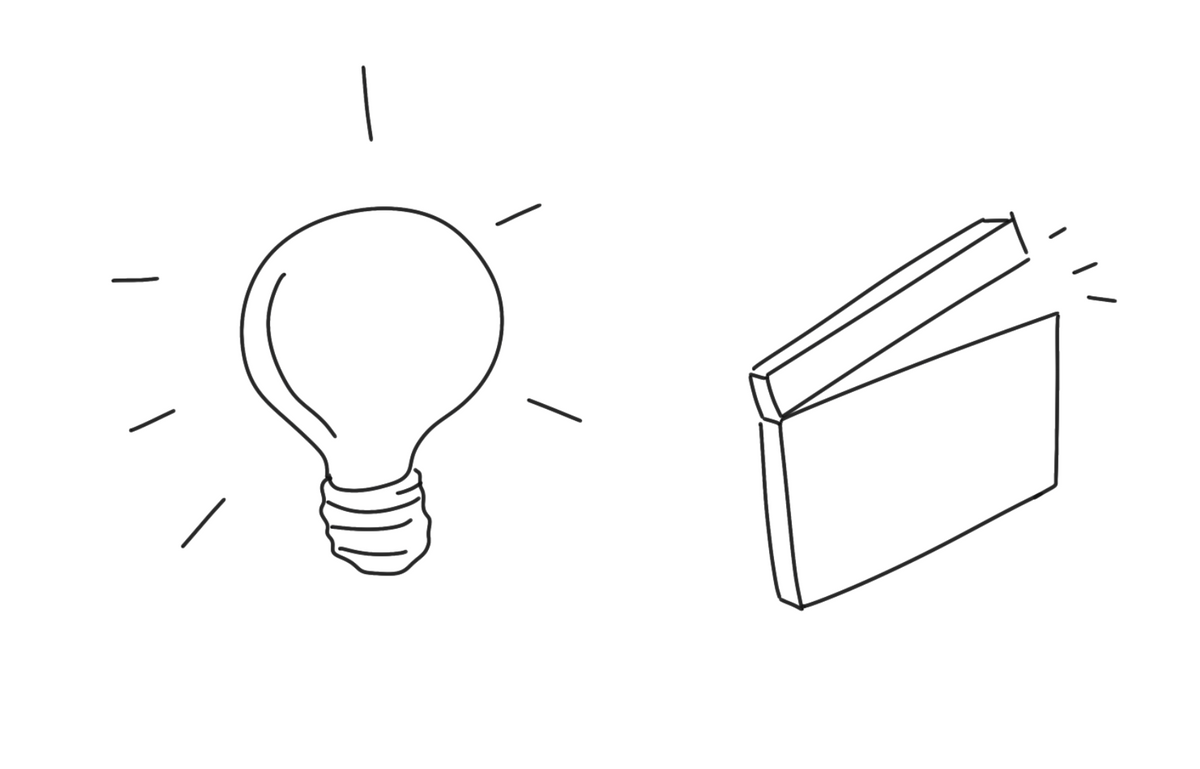Idea-to-action time (ITA)
Minimizing the time between ideas and action to get the most out of our creativity.

A lot of things have to happen for an idea to make it into the real world.
There is a gap in time between an idea and its execution. I like to call it the Idea-to-action (ITA) time.
There are important observations to make on both ideas and actions.
Let's start with ideas.
Types of ideas
Some ideas can be executed immediately, some require some form of process.
We could group them as:
- Ideas for immediate action
- Ideas for non-immediate action
Ideas for non-immediate action
These are the "big ideas". They will have to jump through lots of hoops to survive before they turn into reality.
Ideas for non-immediate action can take hours or days to manifest. In some cases even decades.
The key to acting on non-immediate action ideas is to record them as quickly and with high fidelity as possible.
Whether you fire up a blank note on your phone, start a voice note, or pull up your pen and a piece of paper, time is of the essence.
Some examples of non-immediate action ideas are:
- A concept for a user flow for a client
- A breakthrough insight for a design process
- A novel approach to documenting usability research
When I think of ITA, I think of ideas for immediate action.
Ideas for immediate action
These are the quick, small ideas that make up the bulk of your creative work.
Some examples of immediate-action ideas are:
- A good follow-up question for a user in an interview
- Trying a different layout for a screen
- Some clever copy for a hero section
- Changing the order of some steps in a user flow
- Uncovering an edge case you had not anticipated
These types of ideas can and should be executed quickly. Otherwise, you risk missing your chance or simply forgetting them.
This leads us to the Action part of ITA.
The Action
In the vast majority of cases, the action time in Idea-to-Action depends on your level of mastery of your working environment.
Think about this for a second. How long does it take you to:
- Create a new note and start writing
- Find and open a file you need
- Swap a nested component in Figma
- Start a screen recording
- Share your screen during a meeting
- Inject real data into a design
- Provide a customer with a means to book an interview with you
- Share a piece of documentation with a colleague
- Share a link to a design solution
- Provide a-sync feedback on a design
- Annotate a screenshot
- Turn off music from a tab or Spotify?
These are but a few of the recurring actions designers have to do and where a lot of time can be wasted on noisy interfaces, file clutter, and too many apps and tabs open simultaneously.
In general, the longer your idea-to-action time, the worst it is for your productivity.
A long idea-to-action time can make you forget things or shift your focus to something else. It's the main contributor to losing your flow.
Without external distraction, the shorter your idea-to-action time, the better you'll stay in the flow
Closing remarks
All of this is of course not scientific at all. These are concepts I contemplate from time to time in an attempt to explain behaviors I see in myself and my colleagues.
My hope with putting it out there is that it can inspire other people to reflect on their own productive behavior and hopefully find ways to improve.